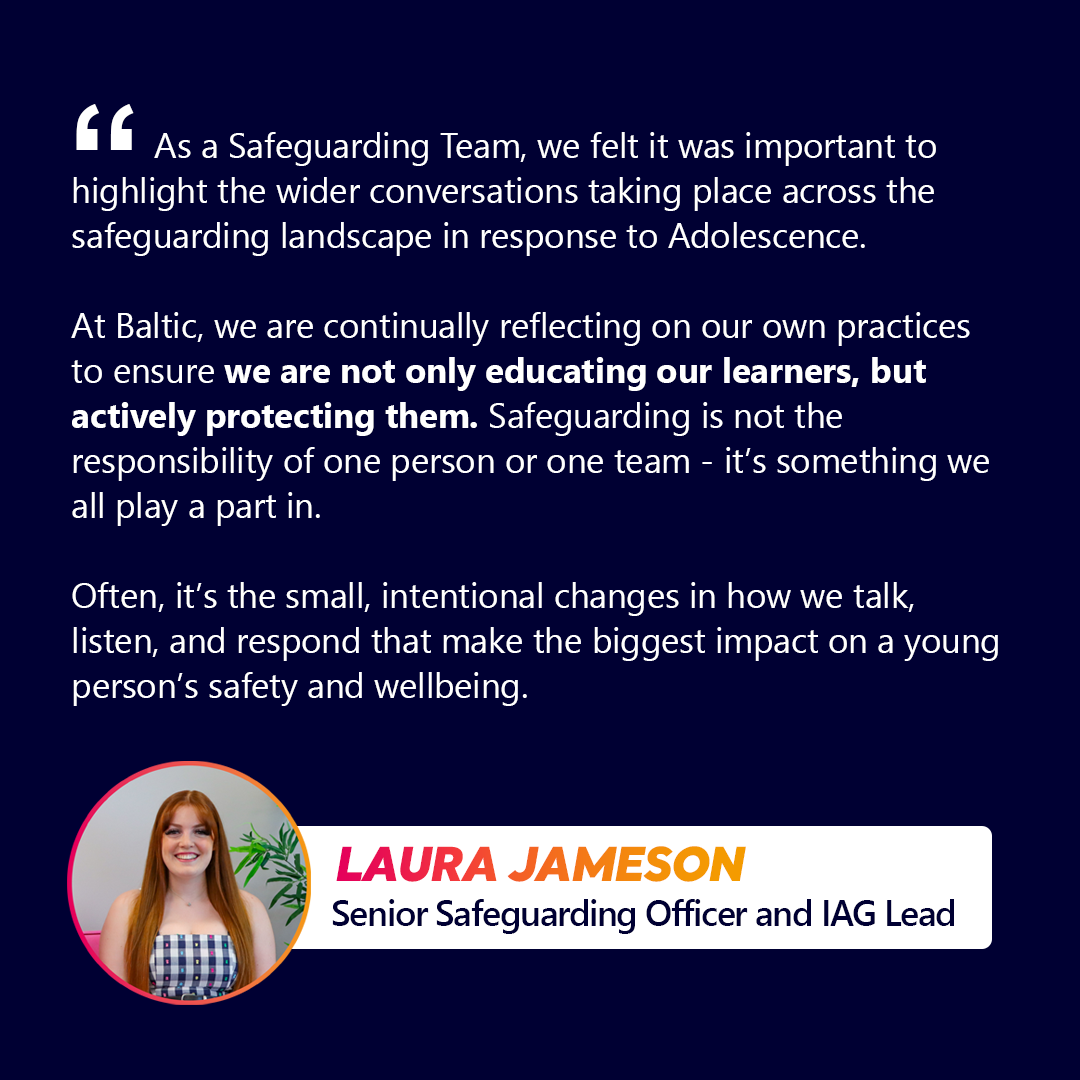Adolescence is Shining a Light on Online Harm, Youth Violence and the Role of Safeguarding in Education
The hit Netflix drama Adolescence has quickly climbed the streaming charts, earning a spot in the UK’s Top 10 and sparking vital conversations around online harm, misogyny, and youth violence.
The series follows the disturbing journey of a 13-year-old boy whose exposure to misogynistic online communities appears to shape his worldview and influence his actions. Beneath the surface of its murder plot, the show offers a sobering look at how digital spaces are impacting young people today, highlighting the prevalence of online harm, toxic masculinity, youth violence, and the isolation many children experience online, often without their parents’ knowledge.
According to its co-creator Stephen Graham, Adolescence was never intended to be an easy watch. Graham has been open about the show’s inspiration, explaining that it was built on the very real and very present issue of violence involving young people. “We made a piece that was based on truth and things that are happening in Britain,” he told Netflix in a recent interview. “We just wanted to create conversation between parents and children.” The show’s intent was never simply to entertain – it was designed to provoke meaningful dialogue.
The Statistics Behind the Storyline
The numbers support the urgency of this message. According to the Ben Kinsella Trust, 57 young people under the age of 25 were murdered with a knife or sharp object in the 12 months leading to March 2024. Seventeen of those victims were under the age of 16. The Youth Endowment Fund reports a decade-long rise in violence affecting children and young people, including an increase in hospital admissions for knife-related assaults. Meanwhile, Ofcom data shows that almost three-quarters of 13 to 17-year-olds have come across potentially harmful content online, and three in five secondary-aged children have been contacted in ways that made them feel uncomfortable.
These statistics, while deeply troubling, confirm what many in the safeguarding space have long known: the digital world can be a breeding ground for harmful ideologies and behaviours, especially when young people are left to navigate it alone. The show touches on the rise of incel culture, the influence of figures like Andrew Tate, and the subtler ways children are exposed to misogyny and radicalisation online – all of which are becoming increasingly visible in education and training settings.
The Role of Safeguarding at Baltic Apprenticeships
At Baltic Apprenticeships, the Safeguarding Team is actively engaging with these issues and working across departments to protect learners from online harm.
The team is trained in the Government’s Prevent Strategy and keeps up to date with the latest national and regional developments through partnerships with Prevent Education Coordinators and Counter Terrorism Local Profiles. Baltic also regularly attends regional safeguarding forums and reviews its Prevent Risk Assessment and Action Plan, which helps identify potential risks of extremism and radicalisation, including online.

Baltic is clear that safeguarding is not the sole responsibility of one team – it’s something that involves all staff. While Baltic’s core mission is to develop skills and knowledge through data and digital apprenticeships, safeguarding remains a foundational priority across everything it does. Coaches, managers, and operational teams are encouraged to be aware of the signs of online harm and engage in open conversations with learners.
Responding to the Issues Raised in Adolescence
Adolescence has triggered conversations at a national level. Prime Minister and Labour leader Sir Keir Starmer has welcomed the decision by Netflix to make the series free to screen in secondary schools, acknowledging its value in sparking classroom debate.
Other members of the Government have commented, Rishi Sunak has described the show as “really hard to watch” with his own children, and has since met with the show’s creators to discuss the dangers of toxic material online and the Government’s responsibility in tackling it. Alongside this, the Online Safety Act’s new illegal content duties have now come into force, aiming to remove some of the most harmful content from platforms that children use every day.
In response to the series, Baltic has taken steps to further support both its learners and its staff. Parents who work at Baltic have been encouraged to watch the show and explore the issues it raises with their own families. Helpful resources have been circulated, including guidance from the Mental Health Foundation on how to talk to children about the show, a factsheet on incel culture, and educational material on online symbols and language that may signal exposure to extremist content.
Maintaining Momentum Through Ongoing Safeguarding Work
While these are steps in the right direction, the safeguarding concerns highlighted in Adolescence will not be solved overnight. These are systemic issues, rooted in culture, digital behaviours, and societal structures that require a coordinated, ongoing response. In the meantime, Baltic Apprenticeships remains committed to creating safe, inclusive learning environments where these conversations are not only welcome but necessary.
For staff or learners who come across material promoting extremism or online abuse, reporting routes are available through the Government’s online platform, as well as the confidential anti-terrorist hotline on 0800 789 321. In urgent situations, individuals should always call 999.
Safeguarding teams across the country are clear: conversations like this need to continue long after the credits roll. At Baltic, that’s exactly what we are working to do.